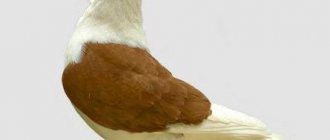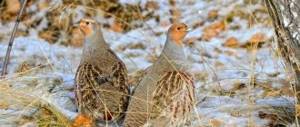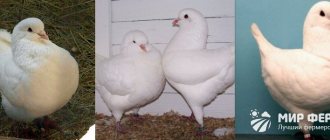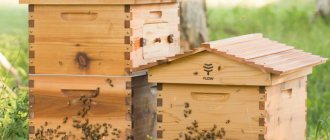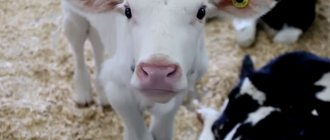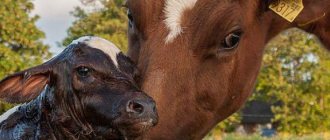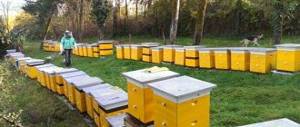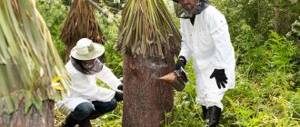Swans differ from other bird species in that they have occupied a special place in human life for thousands of years. Throughout his life, people have admired the many unique qualities of these birds. And this is not surprising, since swans are proud and majestic birds, endowed with beauty and grace by nature. Swan fidelity has served as a source for the retelling of legends, as well as the writing of songs, stories, fairy tales, etc.
What kind of birds these are and how they behave in natural conditions is discussed in this article.
Swan: description
Swans are large waterfowl that belong to the Anatidae family and the Anseriformes order. There are only seven species of such birds left on Earth, and 10 species have become extinct. It turns out that there were about 17 species, some of which disappeared and, of course, not without human participation. Swans are also distinguished by the fact that they have a unique plumage color, consisting of white, black and gray shades.
Appearance
Swans are among the largest waterfowl, with a wingspan of almost 2 meters and a weight of at least 15 kg. The plumage is pure white, as well as coal black or gray shades.
But the beak may differ from the traditional color, as it can be gray or dark yellow. Species such as the black swan or mute swan tend to have a red beak color. Above the beak, regardless of the type of bird, there is a characteristic growth. Its color depends on the type of bird, so it can be black, red or yellow.
Swans can be distinguished from other representatives of this family by their long necks, with the help of which they find food items in the water. These birds have rather short legs, so they are not as comfortable on land as in water, and their find may not look as attractive as their appearance. At the same time, it should be noted that swans have well-developed wing muscles, so they look no less impressive in the air as in water.
Swans fly south in the fall, creating an indelible impression. They fly over the territory, with some sad cries, as if saying goodbye to this place until next spring.
Interesting to know! Pyotr Ilyich Tchaikovsky wrote the music for the legendary ballet Swan Lake. He was inspired by the real swan lake at Neuschwanstein Castle in Germany. On this lake he saw majestic birds swimming, both pure white and coal-black shades.
It is not at all easy to distinguish a female adult swan from a male, since they have almost the same size, as well as the same plumage color. The swan chicks that are born are not distinguished by their gracefulness and it is simply hard to say that these offspring of swans, since the color of their plumage (down) is more of various dirty gray shades.
Character and lifestyle
As a rule, swans spend the bulk of their lives in water. They can be easily distinguished from other species of waterfowl by their leisurely movement across the water surface with a dignified and stately appearance. Swans get their food by using their long necks, which they submerge in the water. In this case, only the back part of the bird with its tail can be seen on the surface of the water. When they are in their natural environment, they behave quite cautiously and can stay away from the shore, where serious danger cannot lurk.
In case of danger, swans try to swim as far as possible. If this does not help, then the birds try to use their wings, scattering across the water. When they flap their wings, it appears as if they are running on water. This way they escape from pursuit much faster. In extreme cases, when they are in mortal danger, swans take to the air. In some cases, swans dive underwater to escape.
If swans live in parks or zoos, then they begin to understand that no one is threatening them and quickly get used to the fact that people pay attention to them. Therefore, they begin to trust people and accept food from them. Swans, despite the fact that they are birds, can fiercely defend their territory and do not tolerate other neighbors or competitors nearby. This is especially true for already established couples.
Swans can be slightly aggressive if someone dares to disturb their territory. They are not afraid of anyone, including humans. You need to know that these are strong birds with a wingspan of up to 2 meters. With one blow of their wing they can easily break the offender's arm. At the same time, we should not forget about such a formidable weapon as the beak. Swans that live in parks or gardens are not as aggressive towards humans, understanding that humans will help protect themselves from other enemies. In such cases, they allow the person to approach, receiving food from him.
It is believed that black swans have a more peaceful character compared to white mute swans, which have a very cocky behavior.
Regardless of the species, swans are migratory birds, so with the onset of autumn they gather in flocks and leave populated areas. They winter in warm countries, choosing the coasts of various bodies of water for this purpose. With the onset of spring they return.
Birds fly in flocks, and the leader flies ahead. The flock forms a kind of clique in the air.
How long do swans live
Swans are birds that can live at least 20 years in the wild, and up to 30 in captivity. There is a legend that states that swans can live about 150 years. Unfortunately, this is just a legend that has nothing to do with real data.
Swans are graceful birds. About swans for children
Description and features of the swan
The ownership of English swans by the Queen is not as romantic as it seems. Rights to birds are claimed based on the taste of the birds. In past centuries, they were considered an exquisite dish and were served at the royal table.
Therefore, the monarchs of England took a keeper of swans into their retinue. Previously, he was an aristocrat. In the 21st century, the position is given to a professor at Oxford University. He is assigned the responsibility of counting birds and organizing support for their numbers.
There is also less romance in the real description of a bird than in phraseological units and legends. There is, for example, the expression “ swan song ”. This is the name given to brilliant creations whose authors retire or die. The real swan song is more like a cry, and in young individuals it is more like a bark.
The metaphor “swan neck” is objective. In birds it is really long, equal to the length of the body. Such a neck distinguishes many Anseriformes, which include swans. They are white, black and gray in color.
Listen to the voice of the swan
All birds are large and powerful, due to which they lift their weight well. swan most of its time on the water. Here the animal's long neck allows it to fish for food from the bottom. Swans walk with difficulty because they have short legs. The limbs of birds, by the way, are reddish. The beak is yellow and large.
The swan is the king bird . This title is given to the animal due to its grace and beauty. For 15-18 kg birds they look exceptionally graceful. Birds also move. The exception is walking. On the ground, the animals waddle from side to side, like ordinary geese. This unites all swans.
Types of swans
To date, 7 species of such birds are known. These include:
- Whooper swans.
- Mute swans.
- Trumpeter swans.
- Small swans.
- American swans.
- Black swans.
- Black-necked swans.
Whooper
It is considered one of the most common species of these unique birds. The habitat of this species extends to the northern part of Eurasia, stretching from Iceland to Sakhalin. At the same time, the southern borders end in the vast steppes of Mongolia, as well as the northern regions of Japan. During the flight, the bird creates peculiar sounds, which are a distinctive feature of this species. The sounds are quite loud and can be heard for many kilometers. This species is characterized by snow-white plumage, rich in fluff. The beak of these swans is lemon yellow with a black tip. This species, when on the water, does not bend its neck like other species, but keeps it in an upright position.
Mute
It differs in that. Which holds its neck in the shape of the letter “S”, although it has an external resemblance to a whooper. The mute is larger in size compared to the whooper. In this regard, his neck appears too thick and shorter, especially from a distance. While in flight, the mute swan does not make loud sounds, but you can hear the movements of its large and strong wings, which cut through the air space with a characteristic sound.
Important point! The bird got its name because in case of danger, when someone tries to approach it, it emits a menacing hiss.
The habitat of this species is very extensive, therefore the mute swan can be found in Europe and Asia, in the southern and temperate climatic zones. Therefore, mute swans are found in southern Sweden, Denmark, Poland, eastern Mongolia and western China. It is very difficult to meet these birds in nature, since they are cautious and distrustful, especially towards humans.
Trumpeter Swan
This species is not much different from the rest of the family, but has an external resemblance to a whooper swan, although it is noted for having an almost completely black beak. Trumpeters are considered to be quite large birds, weighing at least 12.5 kg and a body length of up to half a meter, or even more. Their habitat extends to the North American tundra. Habitats include lakes, both large and small, as well as rivers with weak currents.
little swan
The small swan prefers to nest on the Euro-Asian continent, in the tundra. It is also called tundra, and it is found over a vast territory, from the Kola Peninsula to Kolyma. Naturally, its differences lie in the fact that this variety is slightly smaller in size. So their body length ranges from 114 to 126 cm, and they weigh only 5-6 kg. The lesser swan makes almost the same sounds as the whooper swan, but they are much weaker and lower in tone. The beak of this bird is almost black, with the exception of the upper part, which is yellow. This bird prefers large expanses of water, but it is practically never found in forest areas.
American swan
It is similar to a small swan, but its size is slightly larger (up to 145 cm), and its neck is somewhat thinner and shorter. The beak is also almost black, although in the upper part you can see several yellow spots located on the sides.
Important fact! American swans are distinguished by the fact that they have a unique, inimitable pattern on their beaks, like fingerprints on humans.
Until recently, these swans inhabited the North American tundra, but today their populations have declined significantly. These birds winter along the Pacific coast, up to the state of California, and also off the Atlantic coast, up to the state of Florida. This species is also found in Russia, namely in Anadyr, Chukotka and the Commander Islands.
Black Swan
This variety is characterized by an almost black color of the upper plumage, while the inner feathers can be white, as well as the flight feathers on the wings. As a rule, they always show through the upper feathers, which creates the impression of an overall gray background. If you come closer and look closely, you will notice concentric thin stripes of white on a pure black background. The legs of a black swan are also black, while the beak is bright red, and at its tip there is something like a white, wide ring.
This variety is of medium size, since its length reaches no more than 140 cm, and its weight is no more than 8 kilograms. The neck of a black swan is quite long, consisting of more than 3 dozen vertebrae. Black swans are capable of making trumpet sounds in various situations. Their natural habitats are located in Australia and Tasmania. If we talk about Europe and North America, here these birds are found as semi-wild birds kept in nature reserves or parks.
Black-necked swan
The main difference is the unique coloring of the bird. The swan's head and neck are painted black, and the rest of the body is snow-white. There is a thin white stripe around the eyes. The beak of these swans is characterized as dark gray, with a bright red growth at the very base. Typically, the legs are light pink. Their habitat extends to South America, including Chile and all the way to Tierra del Fuego. These birds winter in Paraguay and Brazil.
Popular breeds of swans
Black Swan
The species is medium in size. The height of adult birds is from 110 to 140 cm, weight from 4 to 8 kg. The black swan has the longest neck among its relatives. In flight, it takes up more than half the bird's length. The color of the plumage and legs is black, sometimes individual white feathers are visible. The black swan's feathers curl along the edges of its wings. The beak is red with a white stripe along the edge. Eye color ranges from light brown to orange. The species lives in Australia, Tasmania, and New Zealand. In Europe and America it is found in parks and reserves.
Black-necked swan
The length of the bird is up to 140 cm, weight is 3.5-6.5 kg. Males are larger in size than females. The plumage is snowy white with a jet black neck and head. There is a thin white stripe around the eyes. The beak is gray with a red growth at the base. The legs are pink. The black-necked swan is common in South America.
mute swan
— Advertising —
A rare species that got its name because of the sounds made by the restless bird. It reaches a length of 180 cm, weight in females is up to 6 kg, in males from 8 to 13 kg. The wingspan is on average 250 cm. The mute swan has a long neck, an elongated body, and the head is decorated with an orange-red beak with a black growth at the base. The bird is found in the northern regions of Europe and Asia. It was spread by humans to North America, South Africa, and Australia.
Trumpeter Swan
The bird's body length is 150-180 cm, its wingspan is up to 200 cm, its weight is about 13 kg. The plumage color is pure white. The species is very similar to the whooper swan, with the exception of a completely black beak. The bird lives in the tundra forests of North America.
American tundra swan
The smallest species of all the inhabitants of the northern hemisphere. Body length is from 115 to 145 cm, wingspan is about 190 cm, weight is from 4 to 9 kg. In appearance it resembles a whooper swan, but differs in its smaller size, short neck and rounded head. The predominant color of the beak is black. It lives in the north of America and Eurasia in the remote tundra and forest-tundra.
little swan
The bird's body length is up to 130 cm, its wingspan is about 200 cm. The weight of an adult reaches 6 kg. The beak is black, but in other respects it looks like a whooper swan. The habitat of the small swan includes the northern regions of Russia.
Whooper swan
A large species, weighing up to 10 kg. The body and neck are almost the same length, the body is elongated. The whooper swan does not bend its neck and always holds it straight. The legs are short. The beak is bright yellow with a black tip. The plumage color is white. The young are distinguished by their grayish feathers and dark head. The bird nests in northern Eurasia.
Natural habitats
Most species prefer temperate climates for nesting, and only a few prefer to live in the tropics. It should be noted that the habitat is very extensive, so swans are found both in Europe and in Asia, Africa, as well as in the north of South America. In Russia, swans can be found more in the tundra zone, and sometimes in the forest-tundra. Moreover, the southern borders of their habitat are connected with the Kola Peninsula and Crimea, as well as with the Kamchatka Peninsula and Central Asia.
Interesting to know! Species such as whooper and mute are considered national treasures in some countries. In the first case it is Finland, and in the second it is Denmark. Mute swans in England represent the personal property of the queen herself. In addition, the meat of these swans is allowed to be consumed exclusively by the royal family.
As a rule, swans prefer to settle within the water areas of large lakes, the banks of which are overgrown with reeds or other aquatic vegetation. They can be seen on the coasts of the seas if there are reed thickets nearby. If people do not chase these birds and treat them with respect, then they easily stop at bodies of water located near populated areas. Despite the fact that swans are considered migratory birds, they can easily stay for the winter if there are ice-free water areas.
Lifestyle of swans
All swans are migratory birds. Swans have only one pair for life. The couple does not like it when their peace is disturbed. Stay away from other birds. Flights are made over vast distances using a wedge. The wedge is headed by the strongest individual. Strong air currents are transmitted from behind to flying birds, which helps weaker individuals at the end of the wedge to fly.
Swans spend most of their lives in water bodies. Their movements simply amaze people, as they are filled with grace, fluidity and self-confidence. River ospreys and golden eagles are dangerous for swans. Swans are saved either by diving under water or by flying. Swans are able to accelerate through the water and take off. In case of danger they can swim underwater. But on land it is more difficult for them to escape, since lifting 15 kg into the air without a take-off run is quite difficult.
Diet of swans
Swans are omnivores, although the basis of their diet is food of plant origin. By plunging their heads into the water, using their long necks, they reach the roots of plants, their stems, and young shoots. If at this moment you manage to catch a frog, find worms, bivalves, or catch small fish, then the swan will never refuse this. When these birds come out of the water onto land, just like geese, swans can nibble the grass.
It is important to know! White swans are considered especially voracious, since they can eat so much food in a day that it amounts to 25 percent of the weight of the bird itself.
As a rule, there is always enough food for these birds, although sometimes they still have to starve. This is possible in cases where bad weather sets in for a long time or when the water level in reservoirs rises and birds cannot reach aquatic plants. In such cases, they lose their kilograms and become weak. Even in this case, the birds do not leave their usual habitats in search of more promising ones in terms of food.
Reproduction and offspring
Swans return to their usual habitats in the spring, in some cases early, when the reservoirs are still covered with a crust of ice, and in some - almost in May. This applies to the northernmost borders of their habitat. Moreover, the swans return in pairs, since they searched for partners in warmer climes.
Swans are considered monogamous birds, so they form pairs for their entire lives. If something happens to one of the partners, then the second partner will no longer look for a soul mate. If you believe the legends, then swans who for some reason have lost their soul mate cannot continue to live and die of grief. Today, such beliefs are considered speculation, since scientists have not yet been able to confirm such legends.
Having returned from the warm climes, a pair of swans settles in the previously chosen territory and immediately begins to form a nest. The nest is a pile of various elements, in the form of tree branches, twigs, reeds and dry coastal grass. In this case, the nest is always afloat. Swans aggressively guard their nest from the encroachments of their relatives, so fights often take place between the birds. When birds fight for their territory, they scream loudly and flap their wings. They collide with each other in the water and beat each other hard with their wings.
In any case, after the pair manages to defend their nest, the female lays several eggs, after which they begin to incubate them. This process lasts up to 40 days, after which the chicks are born. When the female sits on the eggs, the male protects her and also warns her of danger. In case of serious danger, the birds fill the nest with down and rise into the sky. After that, they circle over this place until the real threat disappears.
Need to know! If by chance you come across a nest of swans with eggs or chicks on your way, it is better to leave this place immediately. Birds will very fiercely protect their future offspring, using their strong wings and powerful beak. As a result, they are capable of causing serious injuries to a person, and sometimes incompatible with life.
When swan chicks are born, they already know what to do. They immediately begin to move independently and get food for themselves. Despite this fact, parents take care of their offspring for at least 1 year. In the first stages, parents protect them from bad weather until they are properly strengthened. By autumn they have enough strength and energy to go with their parents on a long journey for the winter. In spring the whole family returns to its roots. Swans do not mature so quickly, so they become sexually mature only in the 4th year of their life.
Mute swan and its offspring
Reproduction
Swans are monogamous . They choose their partners for life.
Mating season
Birds reach sexual maturity at the age of four years.
With the arrival of spring, the mating season begins. The courtship ritual of these graceful birds is similar to a ballet dance. It takes place in water or on land. The male walks or swims in front of the female. At the same time, he screams loudly, raises his wings and feathers on his neck. If the heart of the swan (as the female swan is popularly called) is touched, she takes a similar pose. After this, the couple looks for a nesting site , which the head of the family courageously defends from the encroachment of his flock neighbors.
Nesting
In May, the swan builds a nest. She does this herself, without the participation of the male. The hen chooses secluded places near the water. The swan's nest is a structure with a diameter of 1.5-2 meters made of reeds, grass and the bird's own down. The clutch consists of 4-8 eggs, in young birds - 1-2. Interestingly, at first the eggs have an olive tint, and before the chicks hatch, they turn yellow-brown. Only the female sits on the nest; the male guards her, not moving away long distances. The incubation period lasts 35-40 days.
Raising chicks
Chicks weighing 200-220 grams are born covered with gray down. There is often a debate among bird lovers about the name of a baby swan. Ornithologists give the only correct answer - a chick. Babies are born well developed and immediately begin to accompany adults. Both parents take
care of the offspring A couple of days after hatching, the chick learns to swim under the supervision of its elders. At the age of two weeks, the cub already finds food on its own. Before molting, the chick is incapable of flight. Plumage change occurs at 4-5 months. Until this time, the young animals are kept in the family .
Natural enemies
Swans are considered quite strong birds, so adult swans do not have many natural enemies. But birds, which are not yet able to protect themselves or escape from danger by soaring into the sky, have many natural enemies. Such predators include the fox, as well as various birds of prey, which can easily spot a swan nest from a height. In other words, any species of predators that live within a given territory are natural enemies.
It is important to know! Wolves and bears pose a particular danger to both chicks and adult birds.
One species of turtle that lives in America also poses a danger to its chicks. Swans living in Australia are constantly attacked by the Dingo dog, which lives only on this continent.
Population and species status
It should be noted that most species, or rather all, except the small swan, are not listed in the Red Book of Russia. Even the little swan has the status of a species being restored, while the remaining species are characterized by the status of “least concern.” Along with the small swan, the American swan is listed in the Red Book, under the status of “rare species”. In other words, the seven species of swans remaining on Earth are doing well and are in no way classified as endangered species, compared to other species of birds.
Swans, thanks to their attractive appearance, which is in no way characteristic of other representatives of this family, have earned respect among people for many years. This respect and love is also due to the fact that these birds are strong and fearless, proud and independent. Different peoples have different attitudes towards them, but in any case only positive ones, which is associated with the beauty of these birds. Some peoples believed that they descended from swans, and the Mongols, in particular, argued that people descended from the paws of these independent and strong birds. Some peoples of Siberia were sure that swans did not fly south, but simply turned into snow. After the onset of spring, the snow, on the contrary, turned into swans and so on for centuries from year to year. All this only indicates that swans have attracted human attention for many centuries, which is also associated with many epics that have been retold from generation to generation, forming the image of a mysterious and beautiful bird.
